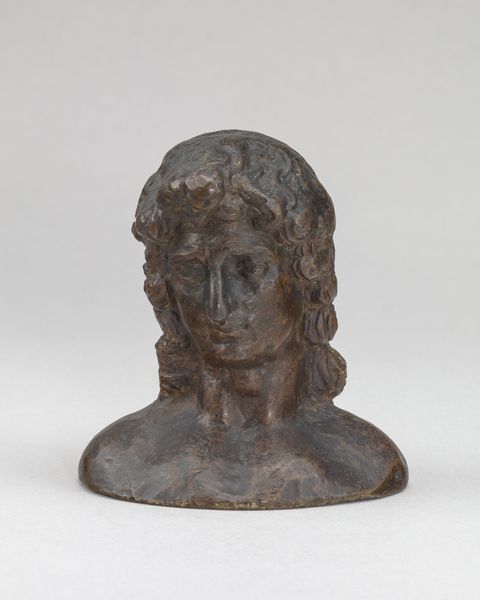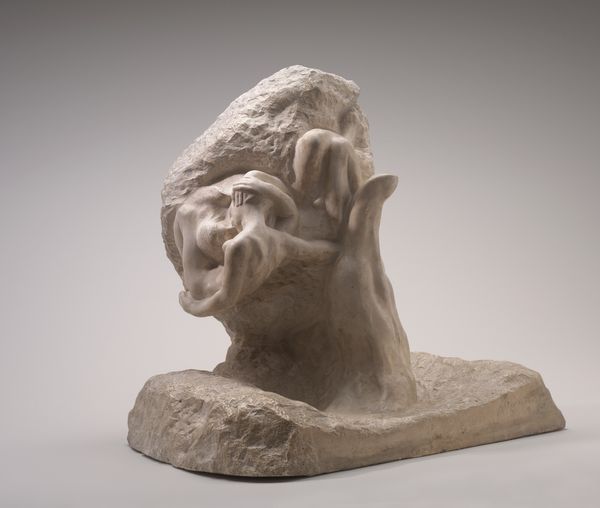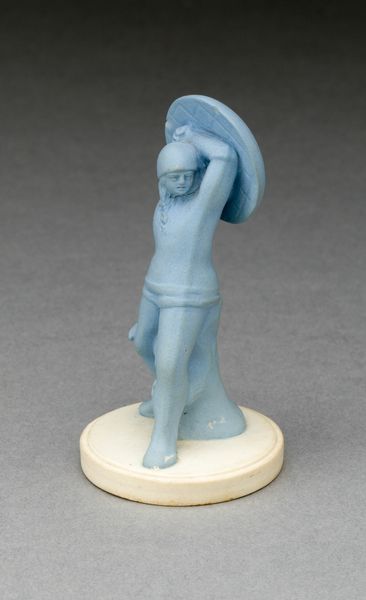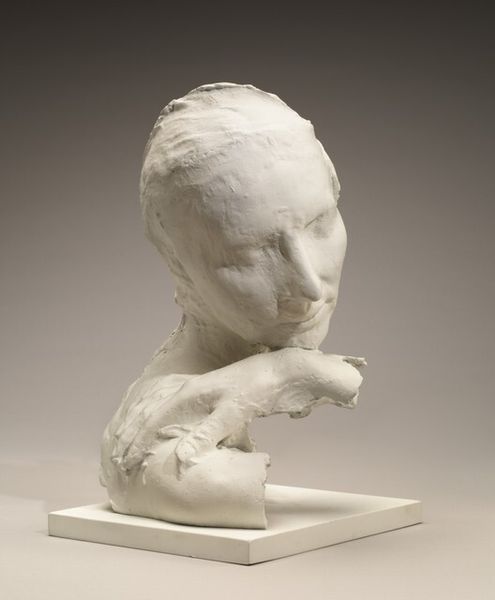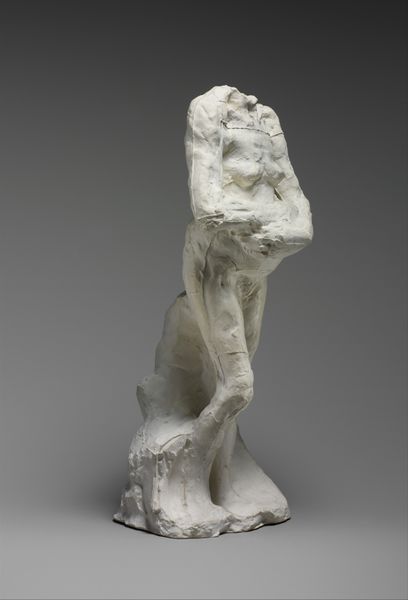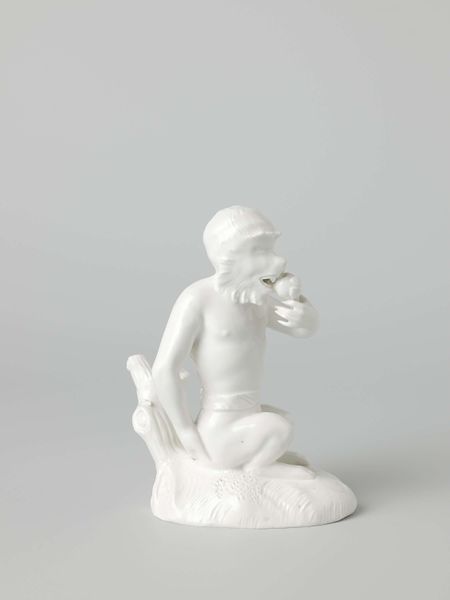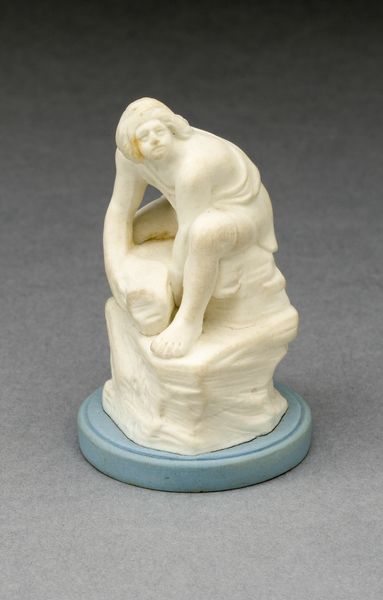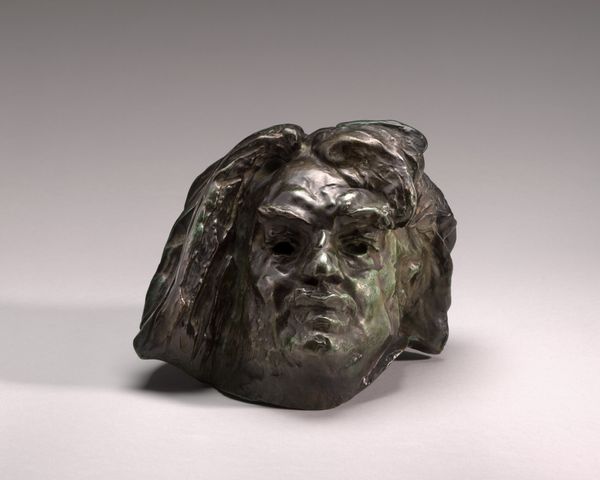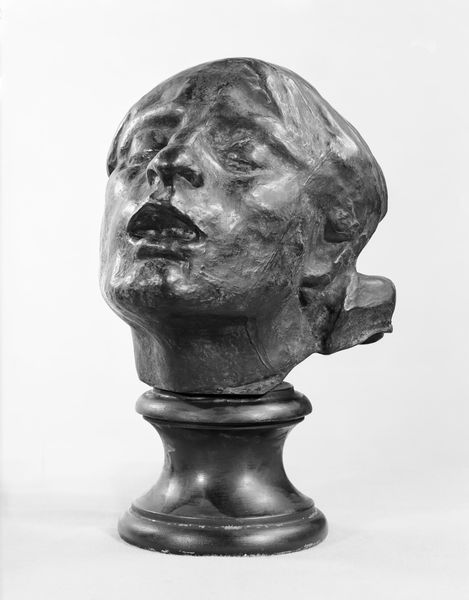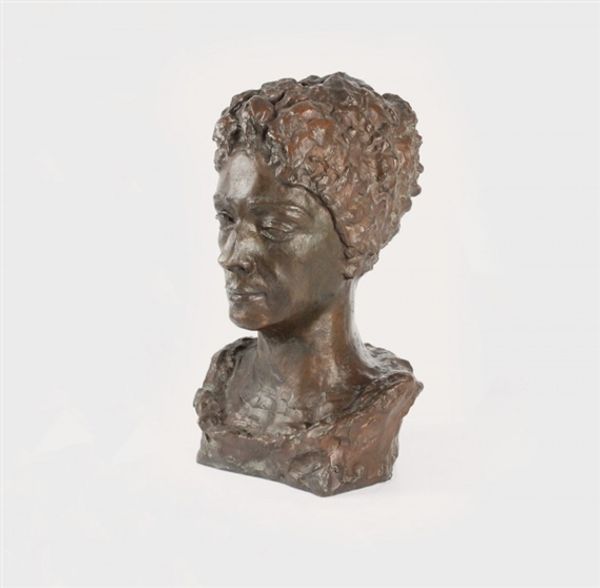
ceramic, porcelain, sculpture
#
portrait
#
face
#
ceramic
#
porcelain
#
sculptural image
#
figuration
#
sculpture
#
decorative-art
#
rococo
Dimensions: 3 × 2 in. (7.6 × 5.1 cm)
Copyright: Public Domain
Curator: Well, here's an interesting piece! What do you think of it? Editor: Striking, unsettling. There's a real tension in the combination of that serene, almost mask-like face and the contorted features next to it. It feels like it should belong on a stage. Curator: Indeed! This object is a cane handle crafted around 1750 to 1760, attributed to the Doccia Porcelain Manufactory. The use of porcelain is fascinating—luxury good meets everyday item. It challenges notions of what materials are deemed ‘appropriate’ for functional objects versus decorative sculpture. Editor: Absolutely. Doccia was heavily supported by elites who really sought to redefine wealth and status through their acquisitions. I wonder how access changed to certain natural resources during this era and influenced production capabilities. The can itself then becomes an indicator of status and societal influence. Were there associations of people in power with canes that further solidified this artistic motif? Curator: Probably so. And in terms of process, the delicate nature of porcelain surely dictated a meticulous, highly skilled labor process. We often overlook the artisans and factory conditions behind objects like these. The flawless white finish hides the complexity of the firing process, not to mention the initial sculpting and mold-making! Editor: You are so right, it is so important to recognize the work conditions around that period. It must be contextualized! The faces too evoke period ideals and stereotypes. What story might be inferred in juxtaposing two visages in that time? This wasn't just some pretty objet d'art; its iconography must've played into prevailing power dynamics and notions of identity at the time, I suspect. Curator: Precisely. The choice of a cane handle suggests daily interaction, a constant reminder of these ideals for the user. The Met's display, situating this handle within a broader decorative arts context, encourages viewers to contemplate these complex interplays of material, social status, and ideology. Editor: So, beyond its artistic value, we must remember that even seemingly simple objects offer a way of thinking about people in different historical periods, particularly those often overlooked in grand narratives. Curator: Agreed. A seemingly frivolous piece becomes a focal point for examining intricate networks of material production, skilled labor, and social identity. Editor: And seeing it really drives home how historical objects impact not just individuals, but larger patterns in societies of past times!
Comments
No comments
Be the first to comment and join the conversation on the ultimate creative platform.
